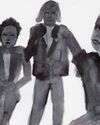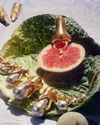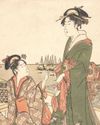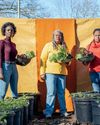There are some traditions that are universal. Here, we highlight a single craft — and how it’s being adapted, rethought and remade for the 21st century.

I NEVER IMAGINED a scenario where I’d be sitting in an Appalachian folk school with a half a dozen strangers handcrafting brooms for a week. Consider how often you think about brooms (probably never), subtract a bit, and that is how often I had thought about brooms before a crisp week in February last year that turned out to be one of the most satisfying of my life.
I had been struck hard by the desire to make things. Not just any things, but simple, useful things fashioned from the materials of nature. I wanted to trade scattershot multitasking for a way into engaging with the physical world. But brooms? Negligible items, best handled by someone other than me. Unlike pottery or basketry, a broom never struck me as a particularly beautiful utilitarian object. A weeklong course, however, was on offer at a place called the John C. Campbell Folk School in North Carolina. So I went.
Each morning, the mist rising over the mountains, I walked from my cabin to the studio where my cohorts and I spent the day. Sometimes talking easily and intimately, other times working in contented silence, we sorted and soaked broom corn (a species of sorghum), sanded branches for handles and attached the grass stems, one sheath at a time, to the handle.With string released from a manual treadle at our feet, we bound the grass at the point where the tasselled part meets the stem, by pulling the string taut and rotating the broom toward ourselves to secure each piece before adding the next. We sewed the finished heads flat, and plaited the stems in a motion that, like building the broom up, felt awkward and compelling.
Denne historien er fra May 2018-utgaven av T Singapore: The New York Times Style Magazine.
Start din 7-dagers gratis prøveperiode på Magzter GOLD for å få tilgang til tusenvis av utvalgte premiumhistorier og 9000+ magasiner og aviser.
Allerede abonnent ? Logg på
Denne historien er fra May 2018-utgaven av T Singapore: The New York Times Style Magazine.
Start din 7-dagers gratis prøveperiode på Magzter GOLD for å få tilgang til tusenvis av utvalgte premiumhistorier og 9000+ magasiner og aviser.
Allerede abonnent? Logg på

Look At Us
As public memorials face a public reckoning, there’s still too little thought paid to how women are represented — as bodies and as selves.

Two New Jewellery Collections Find Their Inspiration In The Human Anatomy
Two new jewellery collections find their inspiration in the human anatomy.

She For She
We speak to three women in Singapore who are trying to improve the lives of women — and all other gender identities — through their work.
Over The Rainbow
How the bright colours and lively prints created by illustrator Donald Robertson brought the latest Weekend Max Mara Flutterflies capsule collection to life.

What Is Love?
The artist Hank Willis Thomas discusses his partnership with the Japanese fashion label Sacai and the idea of fashion in the context of the art world.

The Luxury Hotel For New Mums
Singapore’s first luxury confinement facility, Kai Suites, aims to provide much more than plush beds and 24-hour infant care: It wants to help mothers with their mental and emotional wellbeing as well.

Who Gets To Eat?
As recent food movements have focused on buying local or organic, a deeper and different conversation is happening among America’s food activists: one that demands not just better meals for everyone but a dismantling of the structures that have failed to nourish us all along.

Reimagining The Future Of Fashion
What do women want from their clothes and accessories, and does luxury still have a place in this post-pandemic era? The iconic designer Alber Elbaz thinks he has the answers with his new label, AZ Factory.

A Holiday At Home
Once seen as the less exciting alternative to an exotic destination holiday, the staycation takes on new importance.
All Dressed Up, Nowhere To Go
Chinese supermodel He Sui talks about the unseen pressures of being an international star, being a trailblazer for East Asian models in the fashion world, and why, at the end of the day, she is content with being known as just a regular girl from Wenzhou.